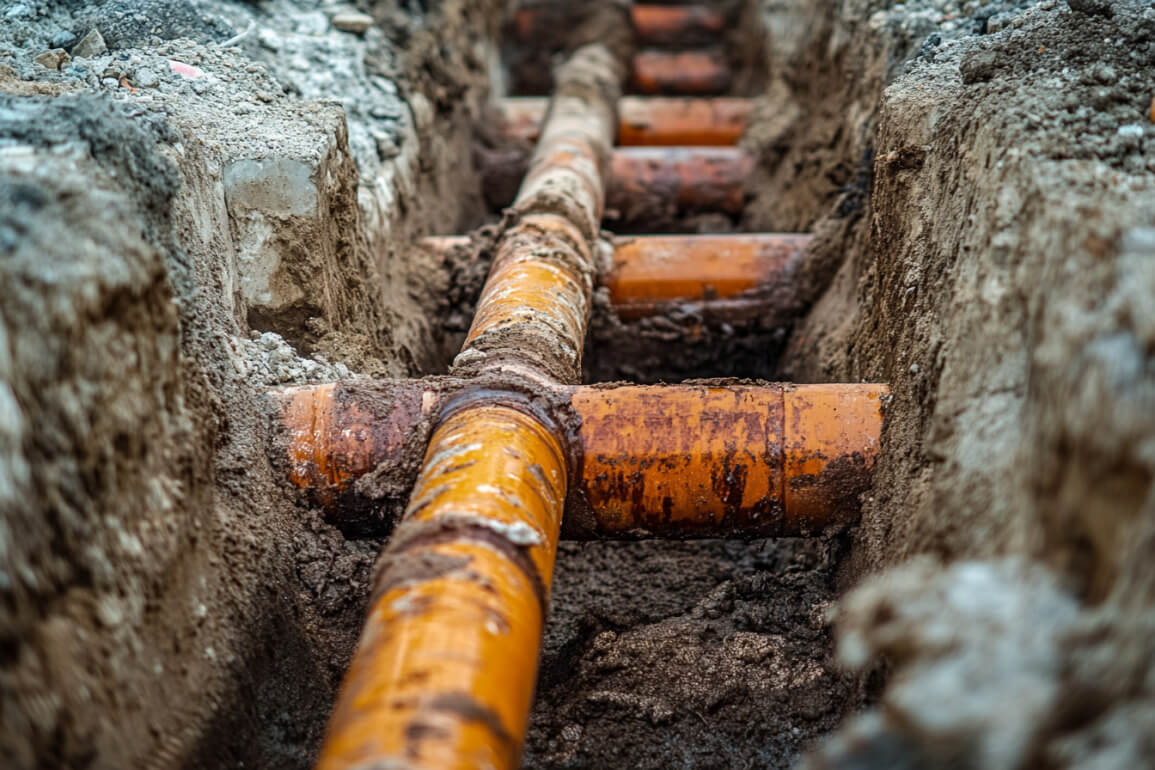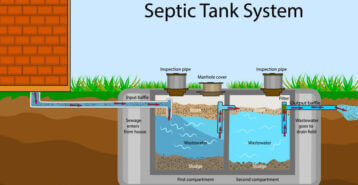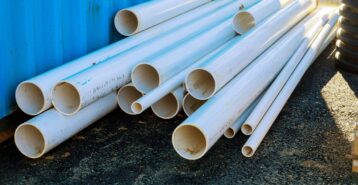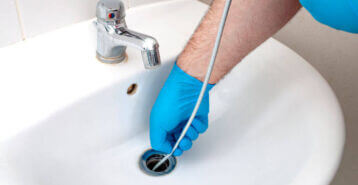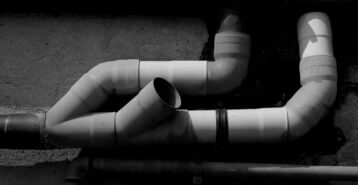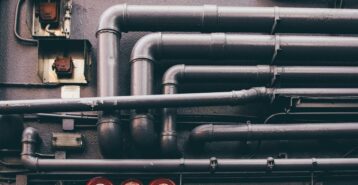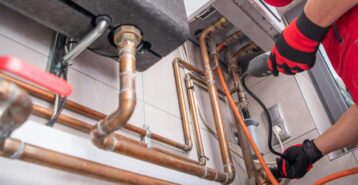Sewer Line Repair and Replacement Cost: A Comprehensive Guide
Each time you brush your teeth, do a load of laundry, or flush your toilet, waste water from your home is taken down a drain and through a sewer line to either a main city sewer line or your private septic system. In short, sewer lines are crucial to the safe and hygienic operation of your home’s water systems. Of course, like any other feature in your home, sewer lines can become clogged, damaged, or worn out over time and will require replacement. In this article, we’ll take a look at the estimated cost for these types of repairs so you know what to expect.
What Is a Sewer Line and Why Repair or Replace It?
A sewer line is the underground pipe that transports wastewater from your home’s drains (sinks, toilets, showers) to the municipal sewer system or a septic tank for proper disposal. Sewer lines are critical components of your home’s plumbing systems.
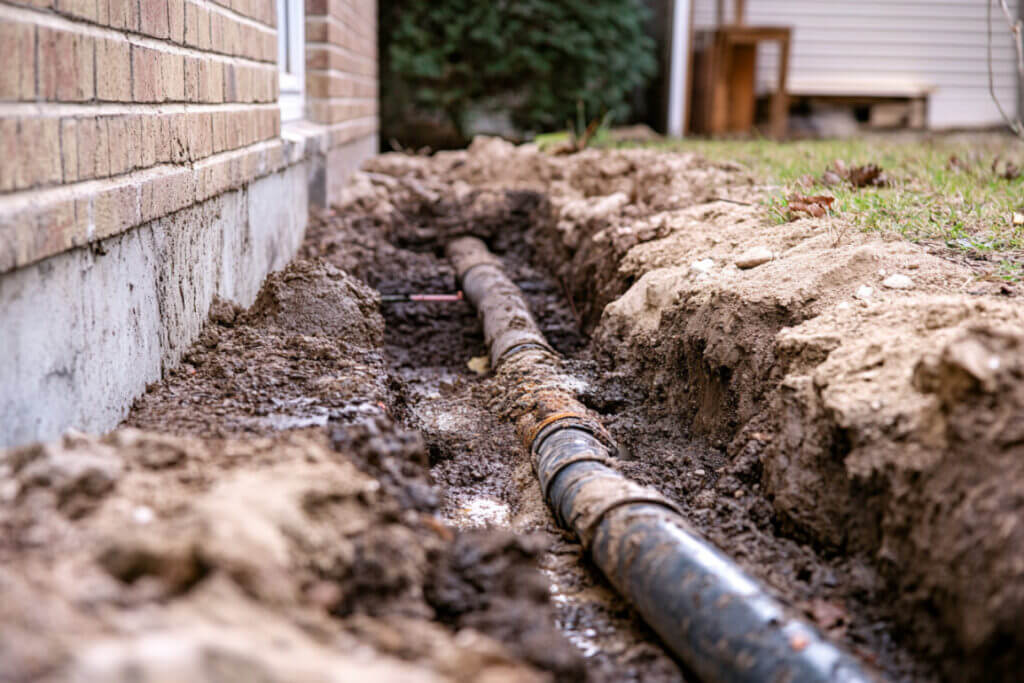
When a sewer line is damaged or wears down over time, you can experience clogs and even serious sewer backups into your home or lawn. Not only are these problems costly to fix, they’re also potentially hazardous to your health.
You’ll know it’s time to address your sewer line if you experience the following:
- Slow Drains: If multiple drains in your home are slow to drain or appear completely clogged, it could be due to a problem with your sewer line. Repeated and persistent clogs in your toilets and sinks along with slow-draining pipes can signal a much larger issue.
- Bad Odors: If you notice lingering smells in your kitchen, bathroom, or yard, you could have a sewer line problem. These odors are caused when sewage backs up in your lines and has trouble draining, causing waste water to sit in your pipes.
- Sewage Backups: Perhaps the most serious sign of a sewer line problem, sewage backups are a clear and immediate sign of a major problem with your home’s sewer line. If you notice backup in your home or yard, it’s best to consider this an emergency situation.
Sewer line fixes generally refer to the sewer line on your own property. Once a sewer line connects to a main line, you aren’t responsible for fixes to the main line. Keep this in mind as we explore the types of repairs and replacements you might need to have done.
Total Cost of Sewer Line Repair and Replacement
When it comes to estimating the cost of sewer line fixes, it’s best to break these estimates down into repairs and replacements.
Sewer line repairs are often much less expensive because they’re on a smaller scale. If you’re simply fixing your existing line, you can expect to pay between $2,500 and $4,000 for a repair, with the average cost being around $3,500. The exact cost will of course depend on several factors.
If your sewer line requires a more extensive solution, you might have to have it replaced. Replacing a sewer line is estimated to cost between $3,000 and $7,000, with most homeowners paying an average of about $5,000, depending on the materials and methods used.
Factors Affecting Sewer Line Repair and Replacement Cost
The cost of your sewer line repair or replacement will vary based on several different factors, including the severity of the problem. Below is a list of other factors and how they might impact the overall cost of your solution.
Extent of Damage
The severity of the damage to your sewer line is perhaps the biggest factor influencing the cost of the project. Minor problems such as cracks could require a quick, localized repair, while a major break will require a full replacement. These two examples fall on opposite ends of the spectrum when it comes to common problems.
Method of Repair or Replacement
- Traditional Excavation: Because sewer lines are buried in your yard, accessing them is often the most expensive part of the fix. Traditional excavation involves digging up the old sewer line and replacing either a section or the entire line. This method typically costs between $50 and $250 per foot. Keep in mind that this method is considered more invasive because it often disrupts your home’s landscape and other features, such as paved driveways and patios, which will have to be fixed separately. Of course, accessing lines that are buried beneath concrete and landscaping can also be costly, contributing to the overall price tag.
- Trenchless Repair: Trenchless repair is a technique that is considered less disruptive than excavating because it doesn’t require extensive digging. Trenchless repair can include something called pipe bursting and pipe lining. Pipe bursting feeds a new pipe through the existing pipe then explodes the existing pipe to break it up and make room for the new pipe. Pipe lining is similar. This method involves inserting a lining into the pipe at points where there are cracks and leaks. The lining expands and creates a new, uncompromised surface without weaknesses. These methods can cost between $60 and $250 per foot.
- Full Replacement: Completely replacing a sewer line involves removing the old line and installing a new one. This method is often more costly because it is more labor intensive than other fixes and requires full excavation.
Length and Depth of the Sewer Line
The length and depth of the sewer line dictates how much labor and the types of equipment necessary to access it, contributing to the overall cost.
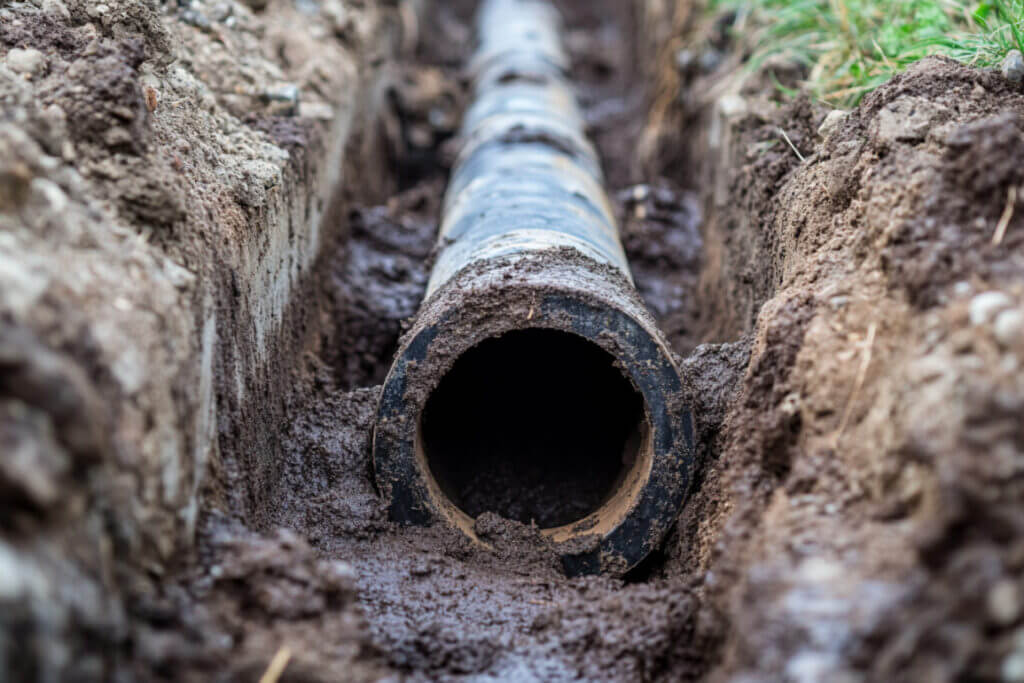
Location and Accessibility
As mentioned, the location of your sewer line as it relates to features of your home and yard will also contribute to the overall cost of a fix. If the sewer line is located under driveways, flower beds, or near large trees, accessing it can be more challenging and expensive. Difficult-to-reach lines might also require additional equipment or labor.
Labor Costs
Labor costs often vary based on where in the country you live and how hard it is to obtain the necessary materials. Urban areas with higher costs of living may have higher labor rates, for example.
Additional Repairs
In many cases, you won’t fully understand the extent of the damage until you start digging around. That said, additional costs can arise if repairs to landscaping, driveways, or other affected areas are necessary after the sewer line work.
Benefits of Investing in Sewer Line Repair and Replacement
Repairing or replacing your sewer line might seem like a daunting and expensive task, but it’s one you simply cannot afford to avoid. Not only does a damaged or old sewer line threaten your health and safety, having a functioning sewer line is typically required in homes according to local code enforcement agencies and the like.
Of course, making the necessary fixes has more than health and compliance benefits. When you replace your home’s sewer line there are also added benefits such as:
- Improved Plumbing Efficiency: Repairing or replacing a damaged sewer line restores your home’s plumbing and improves its efficiency. This will not only improve your daily living, but it can also reduce your home’s water bills.
- Enhanced Property Value: A new or well-maintained sewer line can increase your property’s value and appeal to potential buyers who are looking for systems in homes that are designed to last.
- Reduced Risk of Health Hazards: A damaged sewer line poses many health risks, and having yours fixed will eliminate the stress and threat of such problems.
- Long-Term Savings: While spending thousands to fix an unseen feature in your home might not seem appealing, you can rest assured knowing that paying for these repairs and replacements signals an investment in your home for the long run. Having repairs made can prevent recurring problems, saving money on recurring problems and expensive emergency fixes. Plus, proper maintenance of your sewer line can save you the trouble of having to replace your line prematurely.
Sewer Line Repair vs. Replacement
As previously mentioned, the cost for repairing vs. replacing your home’s sewer line is vast. Repairs are typically much less expensive — in the range of $2,500 to $4,000 — while the cost of replacements are much higher: from $3,000 to $7,000.
In most cases, you won’t have a choice between whether to repair or replace your line based on the problem you’re experiencing. But when given the option, sewer line repairs are typically preferred for minor problems when a fix is expected to prolong the life of your sewer line.
Repairs are typically recommended for localized fixes, where a problem is easily spotted and resolved for a line that is in otherwise good shape. These repairs can lengthen the lifespan of your sewer line, potentially saving you money down the road.
In more serious cases, you might have to replace your entire sewer line. Replacements are much more expensive but offer a longer-term solution to your problems. Replacements are typically recommended for sewer lines that don’t have a localized problem and need several issues resolved.
It’s best to consider repairs for minor issues or when your line is relatively new. Replacements are suggested for lines that have reached the end of their lives or for lines that have extensive damage.
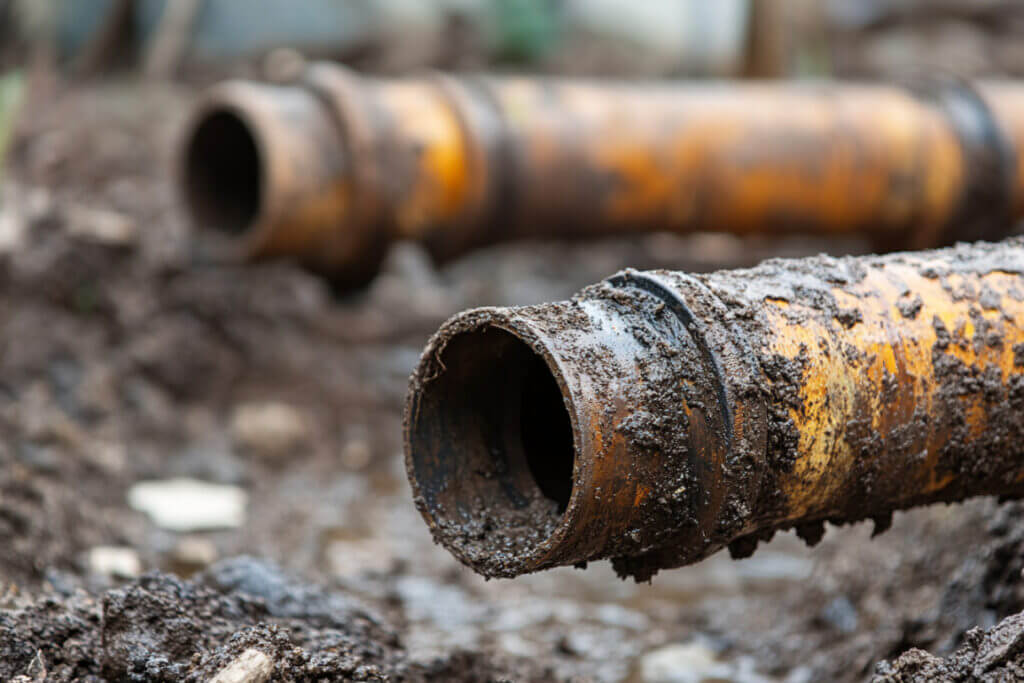
Is Sewer Line Repair or Replacement Right for You?
If you experienced any of the signs or symptoms of a sewer line problem, it’s best to consult a professional to get more information. Plumbers and sewage experts can conduct tests using cameras and other equipment to determine the exact cause of the problem. From there, they can tell you whether a repair or replacement is recommended.
When assessing the need for a repair or replacement, consider how old your current line is and how much life a fix will give it.
Taking the Next Step in Sewer Line Repair
Understanding the costs associated with sewer line repair and replacement is crucial for making informed decisions about your home’s plumbing system. A measured approach to the problem will ensure you get your money’s worth as you select the best course of action.
Of course, repairs and replacements are best handled by seasoned professionals. As you search for a trusted pro, look at their experience levels, pricing and reviews. Be sure to speak with a handful of professionals and obtain a few quotes before selecting a company to go with. Having multiple quotes will tell you whether you’re getting a fair price and help you decide who to hire for the job.
After reviewing this article, you should be better prepared to assess a quote and know whether it’s in the range for typical repairs and fixes.
Compare top-rated plumbing pros in your area.
Read real homeowner reviews, explore qualifications, and view promotions. Modernize makes it easy to browse professionals and find one that will be perfect for your project.
